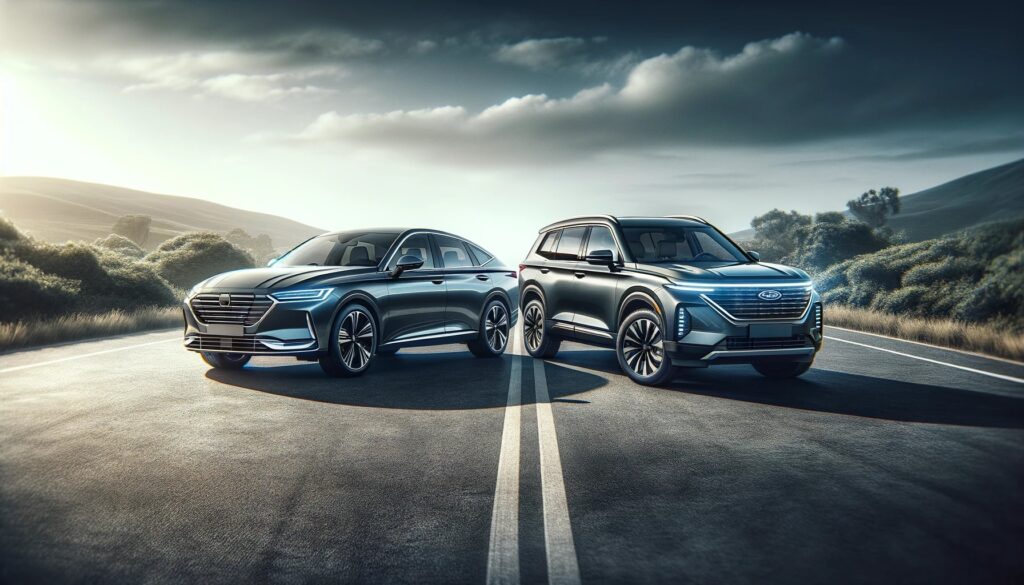
Saloon cars and SUVs (Sport Utility Vehicles) are two distinct types of vehicles with differences in design, size, functionality, and driving experience. Understanding the contrasts between these two vehicle types can help you make an informed decision when choosing the right car for your needs. Here are the key differences between saloon and SUV cars:
Saloon Cars:
- Body Style:
- Saloon cars, also known as sedans, typically feature a sleek, low-profile design with a separate trunk compartment at the rear.
- They have a compact and streamlined appearance, often characterized by a sloping roofline and integrated trunk space.
- Size:
- Saloon cars are generally smaller in size compared to SUVs, with a lower ground clearance and a more compact footprint.
- They are ideal for urban driving and maneuvering through tight spaces due to their smaller dimensions.
- Seating Capacity:
- Saloon cars typically offer seating for up to five passengers, including the driver, with two rows of seats.
- The rear seats may have limited legroom compared to larger vehicles like SUVs.
- Driving Experience:
- Saloon cars are known for their comfortable ride quality, precise handling, and smooth acceleration.
- They provide a more car-like driving experience with responsive steering and agile handling, making them suitable for daily commuting and long-distance travel.
- Fuel Efficiency:
- Saloon cars often boast better fuel efficiency compared to SUVs due to their lighter weight and aerodynamic design.
- They are preferred by drivers looking to save on fuel costs and reduce environmental impact.
SUVs (Sport Utility Vehicles):
- Body Style:
- SUVs feature a taller and more upright body style, with a higher ground clearance and a spacious interior.
- They typically have a boxy silhouette and a rear liftgate or tailgate for accessing the cargo area.
- Size:
- SUVs are larger and taller than saloon cars, offering more interior space for passengers and cargo.
- They come in various sizes, including compact, midsize, and full-size SUVs, catering to different needs and preferences.
- Seating Capacity:
- SUVs are designed to accommodate larger groups of passengers, with seating for up to seven or eight occupants in some models.
- They often feature three rows of seats, providing ample space for families and larger groups.
- Off-Road Capability:
- SUVs are equipped with rugged features and optional four-wheel drive or all-wheel drive systems, making them capable of tackling rough terrain and adverse weather conditions.
- They are popular choices for outdoor enthusiasts and adventure seekers who require off-road capability.
- Versatility:
- SUVs offer versatile cargo-carrying capabilities, with foldable rear seats and adjustable cargo configurations to accommodate bulky items and equipment.
- They are well-suited for hauling cargo, towing trailers, and transporting large or awkwardly shaped items.
Conclusion:
Saloon cars and SUVs cater to different needs and preferences, offering distinct advantages and features. Saloon cars are known for their compact size, fuel efficiency, and car-like driving experience, while SUVs prioritize spaciousness, versatility, and off-road capability. Consider your lifestyle, driving habits, and priorities when choosing between these two vehicle types to find the one that best fits your requirements.
